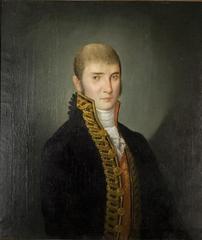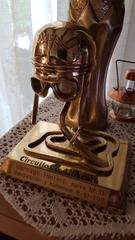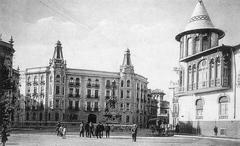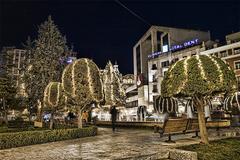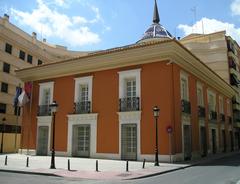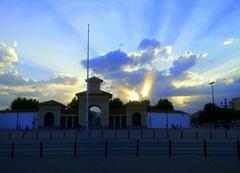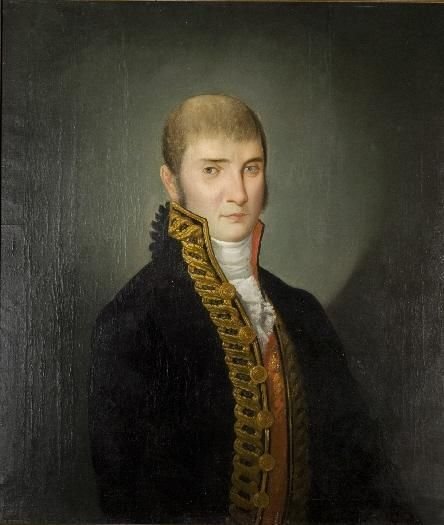
Comprehensive Guide to Visiting Museo de Albacete, Albacete, Spain
Date: 25/07/2024
Introduction
The Museo de Albacete is a cultural gem that offers an immersive journey into the rich history and artistic heritage of the Albacete region. From its origins to its modern-day significance, this museum is a must-visit destination for history enthusiasts, art lovers, and curious travelers alike. In this article, we’ll explore the museum’s fascinating history, its key collections, and provide essential information for planning your visit, including visiting hours, ticket prices, and travel tips. Whether you’re a local or a tourist, the Museo de Albacete promises an enriching experience.
Table of Contents
- History and Significance
- Visiting Information
- Nearby Attractions
- Photo Opportunities
- FAQ
- Conclusion
History and Significance of Museo de Albacete
Origins and Early Development
The Museo de Albacete, originally known as the Museo de la Comisión Provincial de Monumentos, was established by a Royal Decree on March 20, 1867 (source). Initially, the museum’s collection was gathered irregularly and housed in the upper floor of the Diputación building. It officially opened to the public on June 22, 1927. By 1943, the museum had moved to the ground floor of the same building and was renamed the Museo Arqueológico Provincial.
Relocation and Architectural Evolution
In 1967, the museum was relocated to an annex of the Casa de Cultura, where it remained until 1978. The current building, designed by architect Antonio Escario, was inaugurated in the Abelardo Sánchez Park in 1978 (source). The architectural style of the building is described as organic, functional, and practical, allowing visitors to create their own itineraries without rigid guidelines. This design philosophy enhances the visitor experience by providing a more personalized and engaging exploration of the exhibits.
Transition to Museo de Albacete
On May 27, 1975, the museum was officially renamed Museo de Albacete and came under the jurisdiction of the Spanish State. In 1984, the management of the museum was transferred to the Junta de Comunidades de Castilla-La Mancha (source). This transition marked a significant milestone in the museum’s history, ensuring better local governance and more focused attention on the cultural heritage of the Albacete region.
Architectural Significance
The building housing the Museo de Albacete is a masterpiece of modern architecture. Designed by Antonio Escario in the 1970s, it features large, open spaces and warm materials that create a welcoming atmosphere for visitors (source). The structure is fully climate-controlled and accessible to individuals with mobility issues, thanks to elevators, ramps, and stairlifts. The design also includes various dimensions of rooms and different ceiling heights to accommodate the diverse types of exhibits, from large archaeological artifacts to delicate fine art pieces.
Key Collections and Exhibits
Archaeological Collection
The museum’s archaeological collection is one of its most significant features. It includes items from various historical periods, such as the Paleolithic, Neolithic, Iberian, Roman, and Islamic eras. Notable pieces include Iberian votive offerings, Roman mosaics, and Neolithic pottery with solar symbols (source). One of the standout exhibits is the Iberian sculpture of a warrior on horseback from the 5th century BC, found in the necropolis of Los Villares. This piece, along with the Roman dolls and the ritual perfume burner of the servant of Astarte, forms the core of the museum’s archaeological collection.
Fine Arts Collection
The Fine Arts section of the museum is equally impressive, featuring works by renowned artists such as Benjamín Palencia. This collection provides a comprehensive overview of the artistic heritage of the Albacete region, from classical to contemporary art (source). The museum also hosts temporary exhibitions, ensuring that there is always something new for repeat visitors to explore.
Cultural and Educational Impact
The Museo de Albacete plays a crucial role in preserving and promoting the cultural heritage of the Albacete region. It serves as an educational resource for both locals and tourists, offering insights into the region’s rich history and artistic achievements. The museum’s design allows for a flexible and engaging visitor experience, making it an essential destination for anyone interested in the history and culture of Castilla-La Mancha.
Visitor Experience
Visitors to the Museo de Albacete can expect a well-structured and informative experience. The museum is divided into several sections, each dedicated to different aspects of the region’s history and culture. The spacious design and friendly staff enhance the overall experience, making it a pleasant and educational visit (source). The museum is not overly crowded, allowing visitors to appreciate the exhibits at their own pace.
Accessibility and Amenities
The Museo de Albacete is fully accessible to individuals with mobility issues, featuring elevators, ramps, and stairlifts. The building is climate-controlled, ensuring a comfortable visit regardless of the weather. The museum also includes a library, a research room, and various administrative offices, making it a comprehensive cultural institution (source).
Significance in the Context of Albacete
The Museo de Albacete is more than just a repository of artifacts; it is a vital part of the city’s cultural landscape. Located in the beautiful Abelardo Sánchez Park, the museum offers a serene and enriching environment for visitors. The park itself is an oasis of nature in the heart of the city, providing a perfect backdrop for the museum’s architectural beauty and historical treasures (source).
Visiting Information
Visiting Hours
- Tuesday to Saturday: 10:00 AM - 2:00 PM and 4:30 PM - 8:00 PM
- Sunday and Public Holidays: 10:00 AM - 2:00 PM
- Monday: Closed
For the most current information, particularly during holidays or special events, check the museum’s official website.
Ticket Prices
- General Admission: €3
- Reduced Admission: €1.50 (students, seniors, and groups of 10 or more)
- Free Admission: Available for children under 18, individuals over 65, and on special days such as International Museum Day (May 18).
Guided Tours
The museum offers guided tours in multiple languages. These tours provide deeper insights into the exhibits and are highly recommended for a more enriched experience.
Travel Tips
- The museum is easily accessible by public transport. There are also ample parking facilities nearby for those driving.
- Consider combining your visit with a stroll through Abelardo Sánchez Park for a complete day out.
Nearby Attractions
While visiting the Museo de Albacete, take the opportunity to explore nearby attractions such as the Albacete Cathedral, the Pasaje de Lodares, and the historic center of the city. These sites offer additional insights into the rich cultural tapestry of Albacete.
Photo Opportunities
The Museo de Albacete and its surroundings provide numerous photo opportunities. Be sure to capture the stunning architecture, the beautiful park, and, of course, the fascinating exhibits within the museum.
FAQ
- What are the opening hours of Museo de Albacete? The museum is open from Tuesday to Sunday. For specific hours, please check the official website.
- How much are tickets for Museo de Albacete? General admission is affordably priced, with discounts for students, seniors, and groups. Free admission is available on certain days.
- Are there guided tours available? Yes, the museum offers guided tours in multiple languages.
- Is the museum accessible? Yes, the museum is fully accessible, featuring elevators, ramps, and stairlifts.
Conclusion
The Museo de Albacete stands as a testament to the rich cultural and historical heritage of the Albacete region. Its well-curated collections, innovative architectural design, and commitment to accessibility make it a must-visit destination for anyone interested in exploring the history and culture of Castilla-La Mancha. Whether you are a history enthusiast, an art lover, or simply looking for a unique cultural experience, the Museo de Albacete offers something for everyone (source). For more updates and to stay connected, follow the museum on social media or visit the official website (source).
References
- Agenda Cultural de Castilla-La Mancha. (n.d.). Museo de Albacete. Retrieved from https://agendacultural.castillalamancha.es/museo-de-albacete
- Museumspedia. (n.d.). Albacete Museum. Retrieved from https://museumspedia.net/es/i/34-albacete-museum/
- Wikipedia. (n.d.). Albacete Provincial Museum. Retrieved from https://en.wikipedia.org/wiki/Albacete_Provincial_Museum
- Iberian Escapes. (n.d.). Things to do in Albacete. Retrieved from https://www.iberian-escapes.com/things-to-do-in-albacete.html
